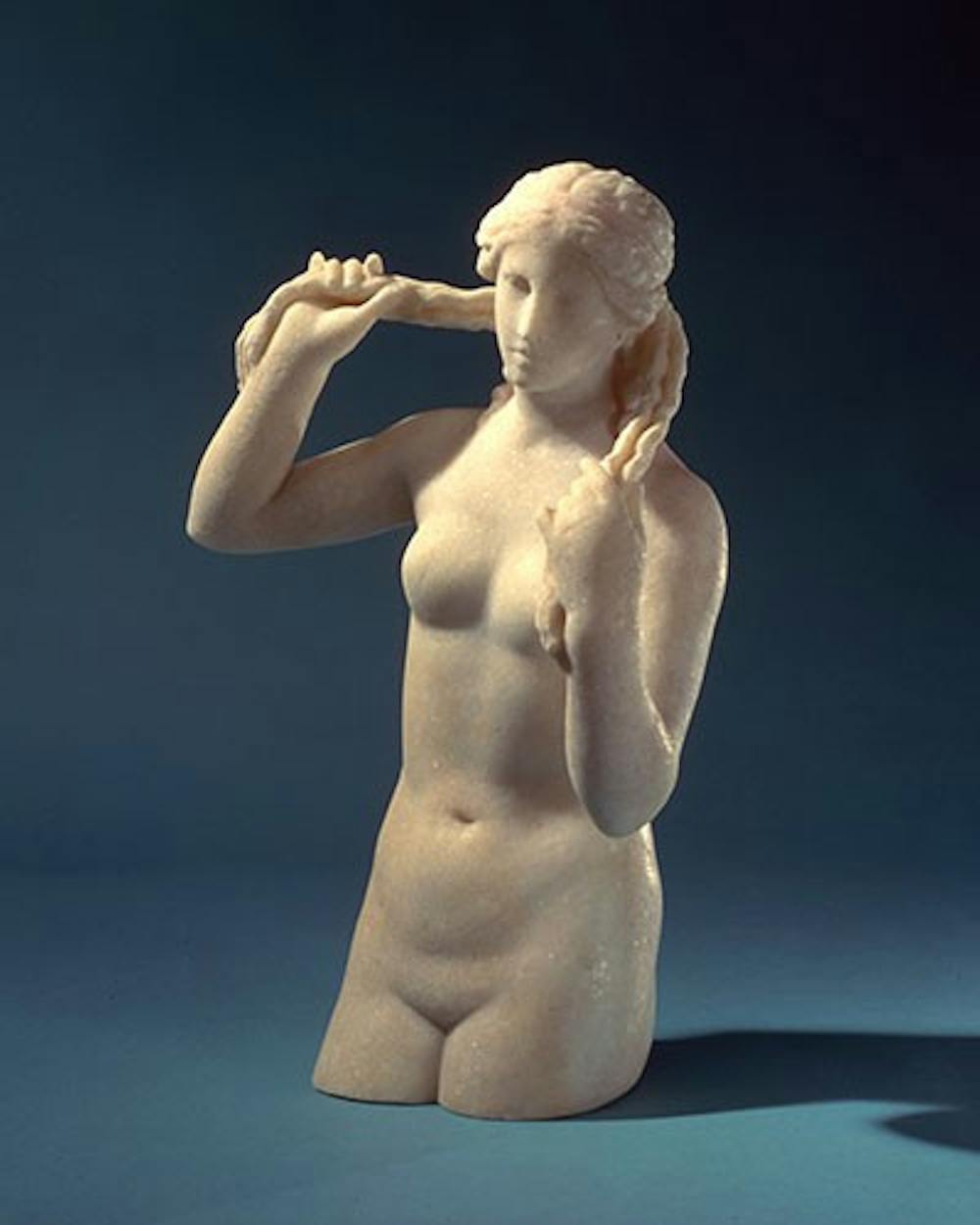How different might Penn's hook-up culture be if, instead of eliciting acceptance or rejection via date night invites or drunk texts, our crushes simply poked their love sticks through our windows at night?
This was a conventional courtship practice on Toll Island, where males of the Wonip Village would fashion long pointed “love” sticks with unique patterns and poke them through the wall of a female’s home to express their interest in the woman as a partner. (Ed. Note: that's not quite what I assumed a "love stick" was...) The “love stick” is just one of the thirty fascinating objects displayed in the Penn Museum’s small exhibit, “Sex: A History in 30 Objects.” The exhibit is divided into six display cases, each of which depicts a different aspect of this complicated and hot-topic entity we broadly refer to as “sex.”
“What I wanted to do with this exhibit was to denaturalize people’s ideas of sex and gender,” curator Lauren Ristvet explained.
 This goal is evident in the display case dedicated to gender identity; a small marble statue of Hermaphroditos, the offspring of Hermes and Aphrodite, steals the show. It exhibits womanly breasts and curves through the wet drapery technique, a customary practice in Ancient Greek sculpture that gives the appearance of a body draped in a wet, clingy, translucent cloth. Males, however, were always depicted nude, so Hermaphroditos’ muscular arm lifts the cloth to expose male legs and genitalia. Lauren says that Hermaphroditos, in contrast to how some of our society views people of ambiguous gender today, is actually a symbol of both power and beauty.
This goal is evident in the display case dedicated to gender identity; a small marble statue of Hermaphroditos, the offspring of Hermes and Aphrodite, steals the show. It exhibits womanly breasts and curves through the wet drapery technique, a customary practice in Ancient Greek sculpture that gives the appearance of a body draped in a wet, clingy, translucent cloth. Males, however, were always depicted nude, so Hermaphroditos’ muscular arm lifts the cloth to expose male legs and genitalia. Lauren says that Hermaphroditos, in contrast to how some of our society views people of ambiguous gender today, is actually a symbol of both power and beauty.
The exhibit also tackles conceptions of beauty with a case entitled “Beauty, Desire, and Attraction: allure is a universal but changing concept.”
“Ideas of the perfect body, ideas of how you should look are obviously always changing, and yet it’s so cross cultural,” Lauren says. This case focuses on conventions of both sexual attractiveness and body image, displaying objects such as a nude statue of Venus, the Roman goddess of sexuality, beauty and love, and a hand-held mirror from an Egyptian tomb. “I can’t think of a single place or time when people weren’t interested in their appearances,” says Lauren.
While provocatively titled, the exhibit does more than display objects depicting genitalia (though there are many of those). From gender identity to societal standards of beauty, the collection focuses not only on what drives our physical sexuality, but also how this connects to our own perceptions of self.

